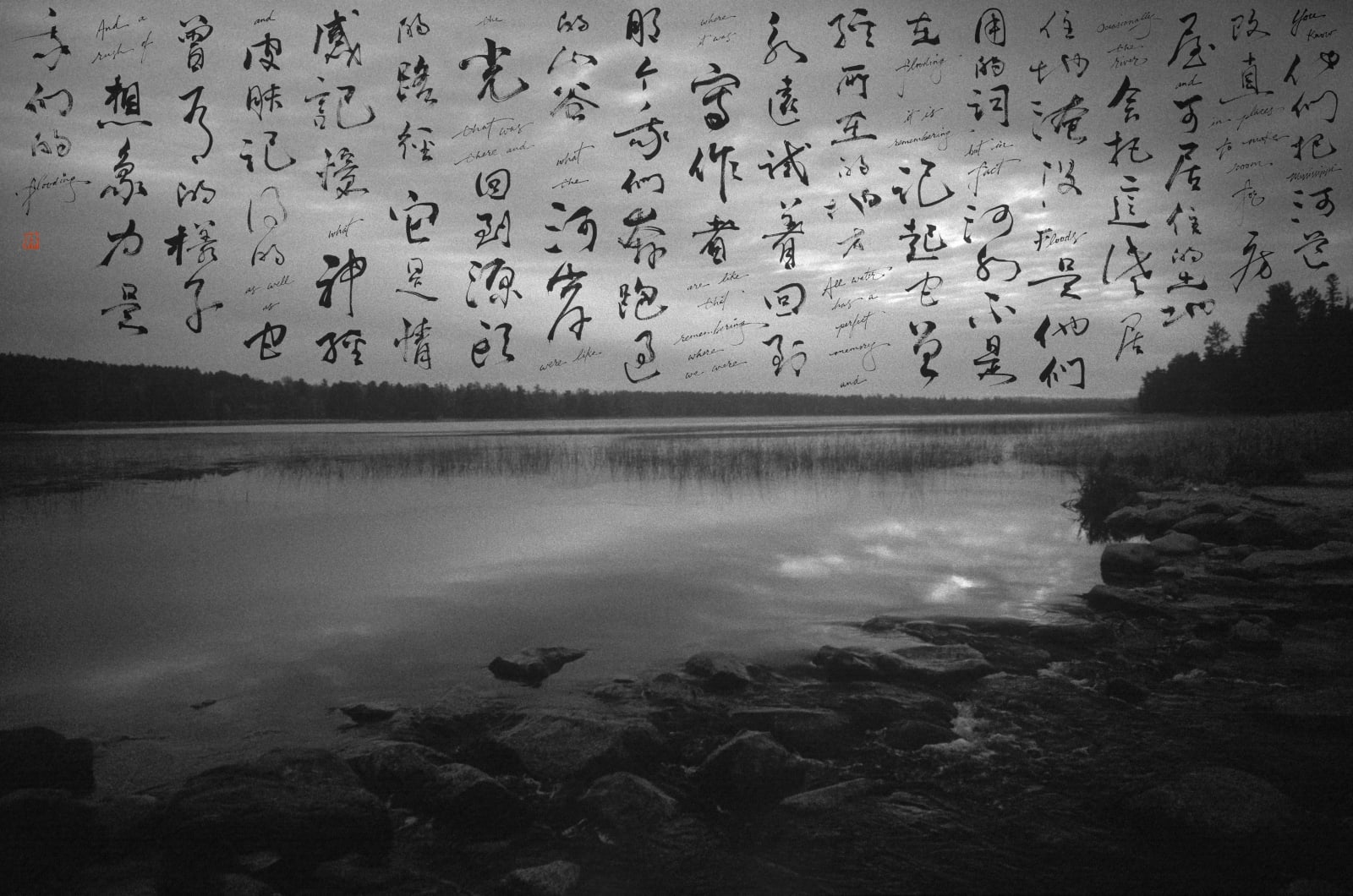-
作品

Michael Cherney American, 1969
Morrison, 2024Photography and bilingual calligraphy; ink on Mitsumata paper20 1/8 x 30 3/8 in
51 x 77.25 cmCopyright The ArtistMichael Cherney's latest series, Within the Gate《其間》, aims to create bilingual art for individuals inhabiting or navigating between cultures. Translating poetry across diverse cultural backgrounds presents distinct challenges, requiring more...Michael Cherney's latest series, Within the Gate《其間》, aims to create bilingual art for individuals inhabiting or navigating between cultures. Translating poetry across diverse cultural backgrounds presents distinct challenges, requiring more than literal translation. As a bilingual artist, Cherney's focus is on preserving the poem's rhythm and essence, adapting certain elements to resonate within a new cultural milieu. Through this artistic reinterpretation in in calligraphic form, the poetry's beauty transcends linguistic barriers, extending an invitation to a wider, more diverse audience to delve into its depth and resonance. Simultaneously, it provokes contemplation on fostering bridges of mutual understanding and dialogue amidst today's increasingly fragmented cultural landscape.
This piece depicts the headwaters of the Mississippi River. The bottom right corner of the image shows where the river begins its journey, flowing out of Lake Itasca in northern Minnesota. The photograph is combined with the following text by Toni Morrison:
You know, 他們把 Mississippi 河道改直 in places,to make room for 房屋 and 可居住的土地.
Occasionally the river會把這些居住地淹沒.
“Floods” 是他們用的詞, but in fact 河水不是在 flooding; it is remembering.
記起它曾經所在的地方.
All water has a perfect memory and 永遠試着回到 where it was.
寫作者 are like that: remembering where we were, 那個我們奔跑過的山谷, what the 河岸 were like, the 光 that was there and 回到源頭的路徑.
它是情感記憶 -- what 神經 and 皮膚記得的 as well as 它曾有的樣子.
And a rush of 想象力是我們的 “flooding.”
Original English text:
The Site of Memory
by Toni Morrison
You know, they straightened out the Mississippi River in places, to make room for houses and livable acreage.
Occasionally the river floods these places.
"Floods" is the word they use, but in fact it is not flooding; it is remembering.
Remembering where it used to be.
All water has a perfect memory and is forever trying to get back to where it was.
Writers are like that: remembering where we were, that valley we ran through, what the banks were like, the light that was there and the route back to our original place.
It is emotional memory--what the nerves and the skin remember as well as how it appeared.
And a rush of imagination is our "flooding.”
秋麦(Michael Cherney)最新的系列作品《其间》旨在为中西跨文化之间穿梭的人们创造双语艺术的可能性。在不同文化背景下翻译诗歌面临着独特的挑战,需要超越字面翻译。作为一名双语艺术家,秋麦的重点是保留诗歌的节奏和精髓,调整某些元素以在新的文化环境中产生共鸣。通过这种书法形式的艺术重新诠释,诗歌的美超越了语言的障碍,向更广泛、更多样化的观众发出邀请,深入探索其深度和共鸣。同时,它引发了对如何在当今日益分裂的文化环境中建立相互理解和对话桥梁的思考。
这件作品描绘了密西西比河的源头。图像的右下角展示了河流的起源,始于位于明尼苏达州北部的伊塔斯卡湖。这张照片与Toni Morrison的以下文字相结合。
展览
2024 Transcultural Dialogues: The Journey of East Asian Art to the West, Fu Qiumeng Fine Art, New York, USA
订阅邮件
* denotes required fields
We will process the personal data you have supplied to communicate with you in accordance with our Privacy Policy. You can unsubscribe or change your preferences at any time by clicking the link in our emails.

